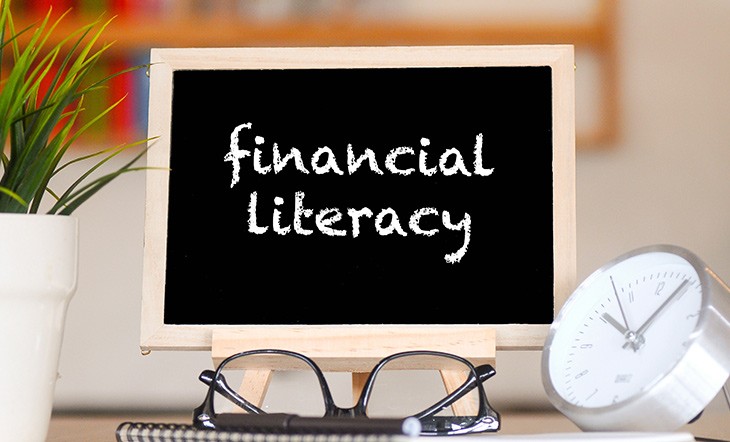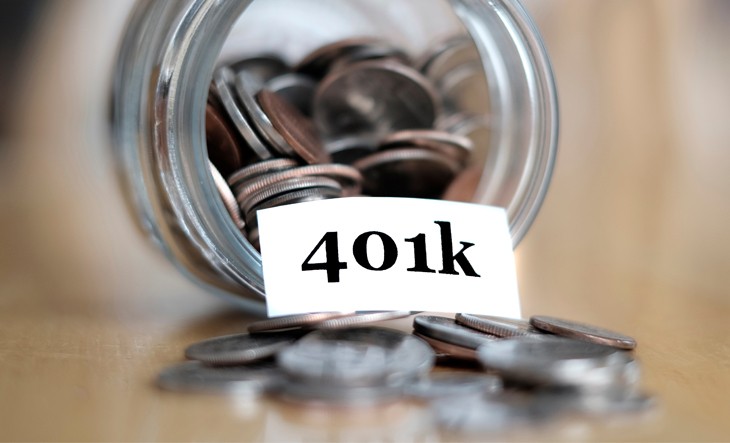Smart Money Moves Post-Retirement to Make Your Retirement Savings Last Longer

Retirement can be a long journey spanning 25 years or more, especially if you are in good health and have longevity on your side. According to the Social Security Administration's longevity calculator, an American male aged 69 can expect to live to about 85. Women, in general, live longer than men, so they may even live longer than 85 years of age. With such a lengthy retirement, it is important to ensure your savings last as long as you do. Running out of funds prematurely could mean relying on your children, returning to work, or compromising your lifestyle. It is essential to make smart financial moves post-retirement to avoid these pitfalls. Consider consulting with a professional financial advisor who can help guide you on how to make your retirement savings last longer.
This article will guide you through strategies to stretch your savings, including how to invest after retirement to help you maintain financial independence throughout life.
Below are 4 smart money moves post-retirement to make your retirement savings last longer:
1. Do not be in a hurry to claim Social Security benefits
One of the smartest financial moves you can make post-retirement is to delay claiming your Social Security benefits. While Social Security benefits are one of the main sources of your income during retirement, you may benefit more if you wait a little before claiming them. Typically, you are eligible to begin claiming your Social Security benefits when you reach your Full Retirement Age (FRA), which is 66 if you were born before 1960, or 67 if you were born in 1960 or later. However, patience can pay off and substantially increase your payouts. If you delay claiming your benefits until the age of 70, you can increase the value of your monthly check by a substantial 32%. Every year that you decide to delay claiming your Social Security benefits, you can earn an additional 8%. When you compare this to the average Annual Cost of Living Adjustments (COLAs) for Social Security benefits, which hover around 1.5%, the advantages of delaying your check become even more evident.
To make this strategy work, you will need to ensure you have enough funds to cover your essential and non-essential expenses during the early years of retirement. This can involve using up other income sources, such as returns from stocks, bond yields, pensions, or withdrawals from retirement accounts like a 401(k) or Individual Retirement Account (IRA). If you strategically use these assets, you can comfortably postpone claiming Social Security benefits and claim higher checks in the future. If possible, you can even consider delaying your retirement itself. Continuing to work for a few more years not only lets you defer Social Security benefits but also allows your retirement savings to continue growing. This can potentially reduce some of your financial strain during the early retirement years and set you up for a more comfortable and secure future. However, before you make any decision, it is also essential to consider your overall financial picture and your specific needs and goals.
Delaying Social Security can be particularly beneficial if you expect to live beyond the average life expectancy. The extra income can help you mitigate longevity risk and eliminate the chance that you will outlive your savings. Waiting until age 70 ensures that you receive a larger check each month, which can be crucial in the later stages of retirement when your other savings may have dwindled.
2. Maintain a diversified investment approach
Investing while in retirement is very important to ensure that your savings keep growing, are not stagnant, and do not lose value over time due to inflation. While your investment approach must change when you retire, it is essential not to stop investing altogether. Here are three key strategies to focus on when investing while retired:
a. Keep more cash in reserves: Your investment goals shift from capital appreciation to preservation in retirement. This is not the time to take significant risks but rather to protect the wealth you have accumulated over the years. One way to do this is by keeping more cash in reserves. Holding cash reserves helps safeguard your portfolio against market volatility and offers you more liquidity. If the market takes a downturn, liquid assets can provide you with the necessary funds to cover your needs. Certificates of Deposit (CDs), high-yield savings accounts, and money market accounts can serve as adequate cash reserves. These options offer stability and easy access to your funds while eliminating risk from your investment portfolio.
b. Diversify your portfolio: Diversification reduces market risk while still allowing your investment portfolio to grow. You can diversify your portfolio in retirement across various asset classes, such as stocks, bonds, and cash so that no single investment significantly impacts your overall financial health. While your risk tolerance may decrease in retirement, it is still essential to maintain a balanced mix of investments. For example, even if you move to bonds to curtail investment risk in retirement, you must consider diversifying across different types within your bond allocation, such as municipal, corporate, and government bonds. Investing across these different types can help you manage risk while still earning a reasonable return.
c. Lower your tax risk: Taxes can lower your retirement income, so it is essential to find ways to manage your tax burden. One way to do this is by maintaining a diversified mix of tax-advantaged accounts. This includes traditional IRAs, Roth IRAs, and 401(k) plans, each offering different tax benefits. For example, withdrawals from a Roth IRA are tax-free in retirement, which can help you lower your annual taxable income. On the other hand, traditional IRAs and 401(k) plans provide tax-deferred growth, but you pay tax on your funds when you withdraw them. Having a mix of these accounts can help you strategically withdraw funds in a way that minimizes your tax liability.
SPONSORED WISERADVISOR
3. Withdraw your funds systematically
In addition to making sure that you have a balanced mix of investments after retirement, ensure that you manage the timing of your withdrawals properly. The timing and amount of your withdrawals can significantly impact your financial stability. Hence, you must carefully plan to ensure that your retirement savings last. If you have traditional retirement accounts, such as a 401(k) or a traditional IRA, you will be required to take Required Minimum Distributions (RMDs) starting at age 73. Failing to withdraw the required amount can result in tax penalties, so it is vital to plan your RMDs carefully. But it is not just about taking the minimum withdrawal. You must also consider how your withdrawals align with your overall financial plan. For example, you might want to coordinate your RMDs with your Social Security benefits and other income sources to minimize your tax liability and ensure that you are withdrawing the right amount to cover your needs without depleting your savings too quickly.
Determining the right withdrawal rate is critical to making your savings last throughout retirement. A popular guideline is the 4% rule, according to which you can withdraw 4% of your total savings in the first year of retirement and then adjust that amount for inflation each year. However, the 4% rule may not be suitable for everyone. Your withdrawal rate should consider your unique circumstances, such as whether you are claiming Social Security benefits, your health status, and your retirement lifestyle. For instance, if you have significant Social Security income, you might be able to withdraw less from your savings. On the other hand, if you anticipate high medical expenses or long-term care needs, you may need to adjust your withdrawal rate accordingly. You must also factor in inflation into your withdrawal strategy, as rising prices will translate to higher withdrawals to maintain the same standard of living. This is why adjusting your withdrawals for inflation each year is critical. In addition to inflation, you also need to be prepared for unexpected expenses, such as health emergencies, home repairs, or other financial surprises. These costs can quickly add up, so it is important to have a cushion in your retirement plan to cover them without disrupting your regular withdrawals.
You can use online retirement calculators to plan effectively. These tools can help you estimate how long your savings will last based on factors like your preferred withdrawal rate, inflation rate, and investment returns. In addition to using calculators, you can also consult with a financial advisor for a more personalized approach.
4. Do not ignore insurance
Insurance can prolong your savings. It takes care of many of your expenses and ensures you do not have to spend money out of your pocket. Long-term care insurance is perhaps one of the most critical forms of coverage in retirement. It covers nursing home costs, assisted living expenses, and more. It is essential to purchase this insurance well before you need it, as premiums can become prohibitively expensive as you age. Health insurance is another important component of your financial security in retirement. While Medicare provides a safety net, it does not cover everything. So, be sure to review your health insurance options and purchase an adequate plan that covers your healthcare needs as you grow older. You must also consider homeowners insurance that covers damage to your home from fire, natural disasters, and theft. In retirement, this coverage becomes even more critical because you may not have the financial flexibility to repair or replace your belongings out of pocket.
While insurance is essential, it is also important to manage the costs of premiums. High premiums can strain your retirement budget, so it is vital to find a balance between adequate coverage and affordability. Make sure to assess your needs and compare different options to select something with the best rates.
To conclude
Financial planning is as important in retirement as it is before you retire. It can help you prolong the use of your savings, ensure that you live comfortably, and offer peace of mind. Effective planning reduces the stress of outliving your retirement funds and enables you to achieve your financial goals. Adopting these smart money strategies can make a significant difference. Additionally, hiring a financial advisor can help address your concerns.
Use the free advisor match tool to get matched with seasoned financial advisors who specialize in retirement planning and can help stretch your savings during your retirement years.
For additional information on retirement planning strategies that can be tailored to your specific financial needs and goals, visit Dash Investments or email me directly at dash@dashinvestments.com.
About Dash Investments
Dash Investments is privately owned by Jonathan Dash and is an independent investment advisory firm, managing private client accounts for individuals and families across America. As a Registered Investment Advisor (RIA) firm with the SEC, they are fiduciaries who put clients’ interests ahead of everything else.
Dash Investments offers a full range of investment advisory and financial services, which are tailored to each client’s unique needs providing institutional-caliber money management services that are based upon a solid, proven research approach. Additionally, each client receives comprehensive financial planning to ensure they are moving toward their financial goals.
CEO & Chief Investment Officer Jonathan Dash has been profiled by The Wall Street Journal, Barron’s, and CNBC as a leader in the investment industry with a track record of creating value for his firm’s clients.








.jpg)












.jpg)






.jpg)


.jpg)


.jpg)














.jpg)




.jpg)






.jpg)

.jpg)







.jpg)

.jpg)






.jpg)




.jpg)
.jpg)

.jpg)



.jpg)





.jpg)
.png)
.jpg)


.jpg)

.jpg)





.jpg)

.jpg)


.jpg)
.jpg)
.jpg)
.jpg)
.jpg)

.jpg)



.jpg)




.jpg)
.jpg)


.jpg)
.jpg)
.jpg)
.jpg)
.jpg)

.jpg)




.jpg)
.jpg)


.jpg)
.jpg)
.jpg)
.jpg)

.jpg)

.jpg)













.jpg)


.jpg)


.jpg)




.jpg)











.jpg)



